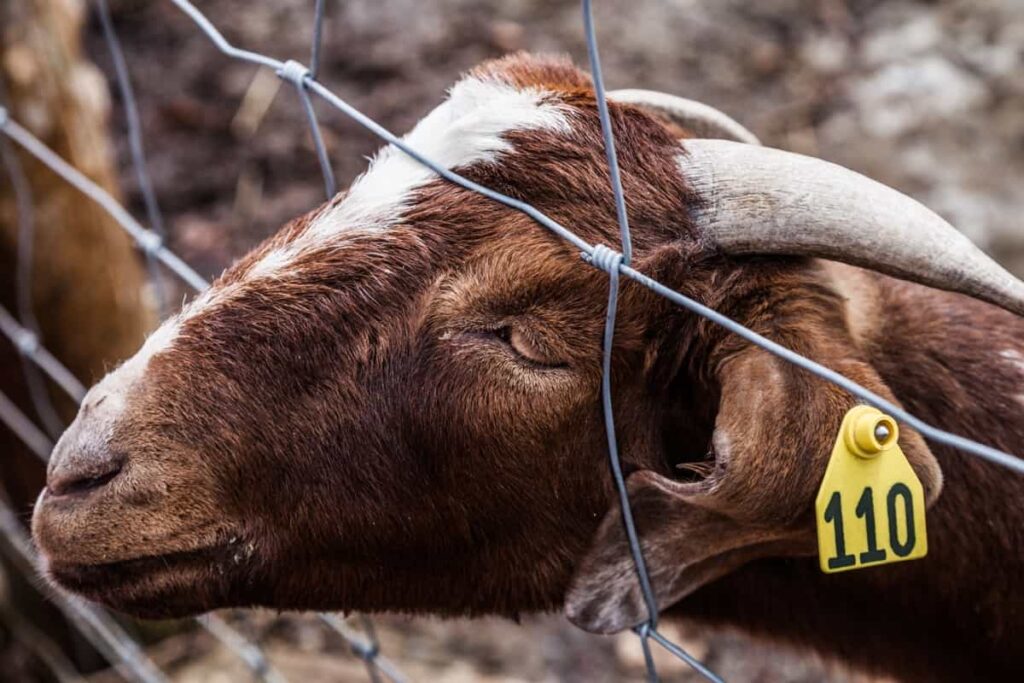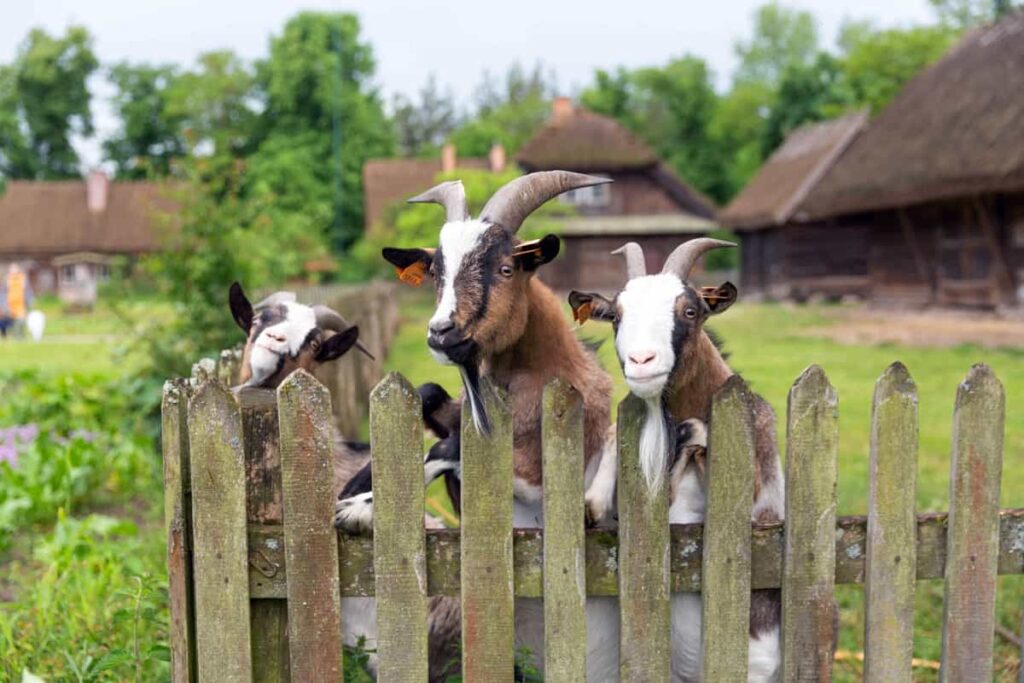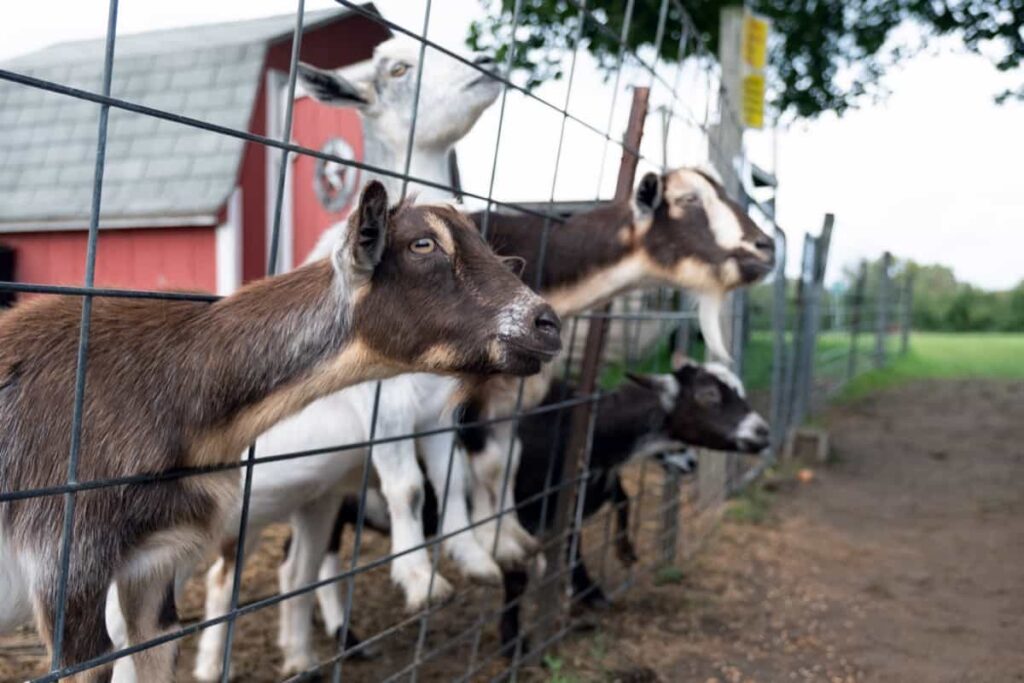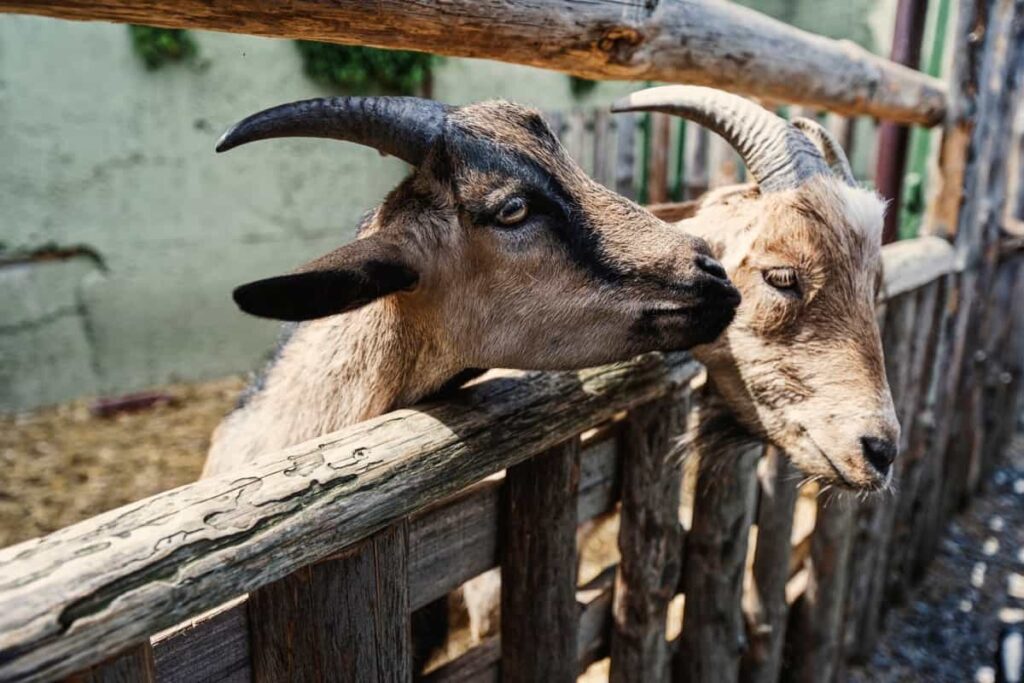Building a cheap goat fence on your budget has numerous benefits beyond saving money. It allows you to allocate resources wisely and invest in other goat care or farm maintenance aspects. By finding cost-effective solutions for fencing, you can create an affordable enclosure without compromising the safety and security of your goats. Also, building a cheap goat fence allows you to expand or modify your fencing system.

How to Build a Cheap Goat Fence
Factors to Consider Before Building a Goat Fence
Assess the size and type of fence required for your goats. Consider the number of goats you have, their breed, age, and behavior. Some breeds may require taller fences or additional protection from predators. Next, think about the terrain where you will be installing the fence. Consider local regulations regarding livestock fencing as well. Before proceeding with construction, check with your municipality or homeowners’ association for any specific requirements or restrictions.
Assessing Your Goat’s Needs: Determining the Size and Type of Fence Required
Different breeds have different tendencies when it comes to jumping or climbing fences. If you have larger or more active breeds, you may need a taller fence with added reinforcement to prevent escape attempts. Smaller breeds might not require as tall a fence but still need sturdy materials.
Next, consider the number of goats you have and how much space they need. Additionally, take into account any specific behaviors exhibited by your goats. Some goats are notorious escape artists who can squeeze through small gaps or push against weak spots in a fence. Understanding these behaviors can help determine whether additional measures like electric fencing or double layers are necessary.
Selecting the Right Materials: Affordable Options for Building a Goat Fence
One option is using welded wire mesh fencing. It’s inexpensive and provides good visibility while keeping your goats contained. Another alternative is electric netting, which can deter curious goats without costing a fortune. Consider using woven wire fencing if you prefer a more traditional fence approach. Another cost-effective option is utilizing recycled materials such as old tires or scrap metal sheets to create makeshift gates or panels. This will save you money and give your fence a unique and rustic look.
In case you missed it: Why is CDT Vaccine Important for Goats: Benefits and Role

Planning the Layout: Designing an Effective and Cost-Efficient Fence System
You need to determine the size of the area that needs to be enclosed. This will depend on the number of goats you have and their required space. It’s important to give them enough room to roam and graze comfortably. Next, consider the type of fence that would work best for your situation. Consider your budget and what will provide adequate protection for your goats. Once you’ve decided on the size and type of fence, it’s time to start designing the layout.
When laying out your fence posts, consider spacing them evenly apart while ensuring they’re sturdy enough to withstand pressure from curious goats leaning against them. T-posts can be more cost-effective than wooden posts while still providing stability. By carefully planning your goat fence layout, you can create an effective and budget-friendly system that meets all your requirements without sacrificing the safety of your animals.
Digging Post Holes: Techniques for Installing Sturdy Fence Posts on a Budget
Determine the number of posts needed for your fence and mark their locations. Then, consider using manual tools like a post-hole digger or shovel instead of expensive machinery. While it may require more physical effort, it’s a cost-effective alternative. When digging the holes, ensure they are deep enough to provide sufficient stability for your fence.
A general rule is to dig holes at least one-third of the length of each post plus an additional six inches for gravel or concrete footing. Another budget-friendly option is using metal T-posts instead of wooden ones. T-posts are typically cheaper and easier to install since they don’t require digging as deep as wooden posts. However, remember they may not offer the same strength and durability as wooden posts.
Choosing the Right Wire: Affordable and Durable Options for Goat Fencing
Choosing the right wire for your goat fencing ensures a cost-effective and durable solution. One option to consider is woven wire mesh, which consists of horizontal and vertical wires that are tightly woven together. This type of wire is sturdy and can withstand pressure from goats pushing against it. It also protects predators trying to enter the enclosure.
Another option is high-tensile electric fence wire, which offers both affordability and durability. This type of wire can be easily tensioned and requires minimal maintenance. It’s important to note that an additional electric charge needs to be installed along with this type of wire for effective containment. Remember that safety should always be a priority when selecting goat fencing materials. Consult with professionals or experienced goat owners for recommendations on suitable wires for your specific needs before making a final decision.
In case you missed it: 11 Important Points to Consider for Bottle Feeding Goats

Installing T-Posts: A Budget-Friendly Alternative to Wooden Posts
To get started, determine the number of T-posts you will need based on the size and layout of your fence. These metal posts can be spaced anywhere from 8 to 12 feet apart, based on the terrain and level of security required. Consider renting a manual or hydraulic post driver to make installation even easier if you don’t already own one.
To install the T-posts, mark where each post must go along your fence line. Using a shovel or post-hole digger, create holes approximately two feet deep. Insert each T-post into its designated hole and tamp down firmly with a sledgehammer until secure in the ground.
Securing the Fence: Cost-Effective Methods for Attaching Wire to Posts
The budget-friendly method is using zip ties or baling wire. These versatile and inexpensive materials can easily be wrapped around the wire and post, providing a secure attachment point. Just tighten them properly so they don’t come loose over time. Another option is using hog rings or fencing staples. These small metal fasteners can be hammered into the wooden posts, creating a strong connection between the wire and the post. They may require additional tools like pliers or a staple gun but are still relatively inexpensive compared to other alternatives.
Adding Electric Fencing: Enhancing Security without Breaking the Bank
Electric fencing can be a cost-effective and efficient solution. The addition of electric fencing not only enhances security but also helps deter predators and keeps your goats safe within their designated area. The budget-friendly option for adding electric fencing is to use solar-powered chargers.
These chargers harness energy from the sun, eliminating the need for costly electricity bills while providing a reliable power source for your fence. Consider using lightweight poly wire instead of traditional heavy-duty wire to save money on electric fencing. Polywire is cheaper than other options but still provides adequate strength and durability.
Tips for Keeping Your Cheap Goat Fence in Good Condition
Regular Inspections: Take the time to regularly inspect your goat fence for any signs of wear, damage, or weak spots. Look for loose wires, broken posts, or areas where goats may have started digging under the fence.
Regular Cleaning: Goats are notorious for rubbing against fences and leaving behind dirt and debris. Regularly clean your goat fence using a mild detergent and water solution to remove any buildup that could compromise its strength.
Protect Against Predators: While this may not directly relate to maintaining the condition of your cheap goat fence, it’s important to mention that protecting against predators is crucial.
Frequently Asked Questions (FAQ) on Goat Fence on Your Budget
How High Should My Goat Fence Be?
Goats are notorious escape artists known for their jumping abilities. To prevent them from leaping over your fence, having a minimum height of four feet for most breeds is recommended. However, some larger breeds may require fences up to six feet tall.
In case you missed it: 10 Steps to Start Goat Farming in Europe: Business Plan, Cost, and License

Should I Include a Gate in My Goat Fence Design?
Absolutely. A secure gate makes accessing your goats’ enclosure easier while maintaining their safety. Ensure your gate is sturdy with latches that goats cannot easily open.
What Materials Should I Use for My Goat Fence?
When it comes to cost-effective options, consider using T-posts and woven wire fencing. T-posts are affordable and easy to install, while woven wire provides excellent strength and durability.
Can I Use Recycled Materials for My Goat Fence?
Repurposing old pallets or scrap lumber can save you money while providing a sturdy enclosure for your goats.
Conclusion
A well-built fence is essential in keeping your goats contained while protecting them from potential dangers. Additionally, having an affordable goat fence allows you to allocate more resources toward other aspects of goat farming, such as feed, shelter, and healthcare. By carefully considering your needs, selecting the right materials, and planning out the layout of your fence system, you can create a cost-efficient solution that meets both your budgetary constraints and the requirements of your goats.
- Types of Grass Growing for Goat Farm
- How to Train Goats for Milking: A Beginners Guide
- Goat Milking Practices and Equipment: A Beginner’s Guide
- Goat Farming for Fiber: Producing Mohair and Cashmere
- Maximizing Goat Milk Production: Tips for Dairy Goat Farmers
- Goat Farming as a Family Business: Strategies for Success
- Profitable Kenya Goat Breeds for Commercial Dairy and Meat Business
- Unlock the Secrets of Oberhasli Goat: Discover Raising and Management Practices
- Ultimate Guide to Myotonic Goats: Explore Profile to Raising